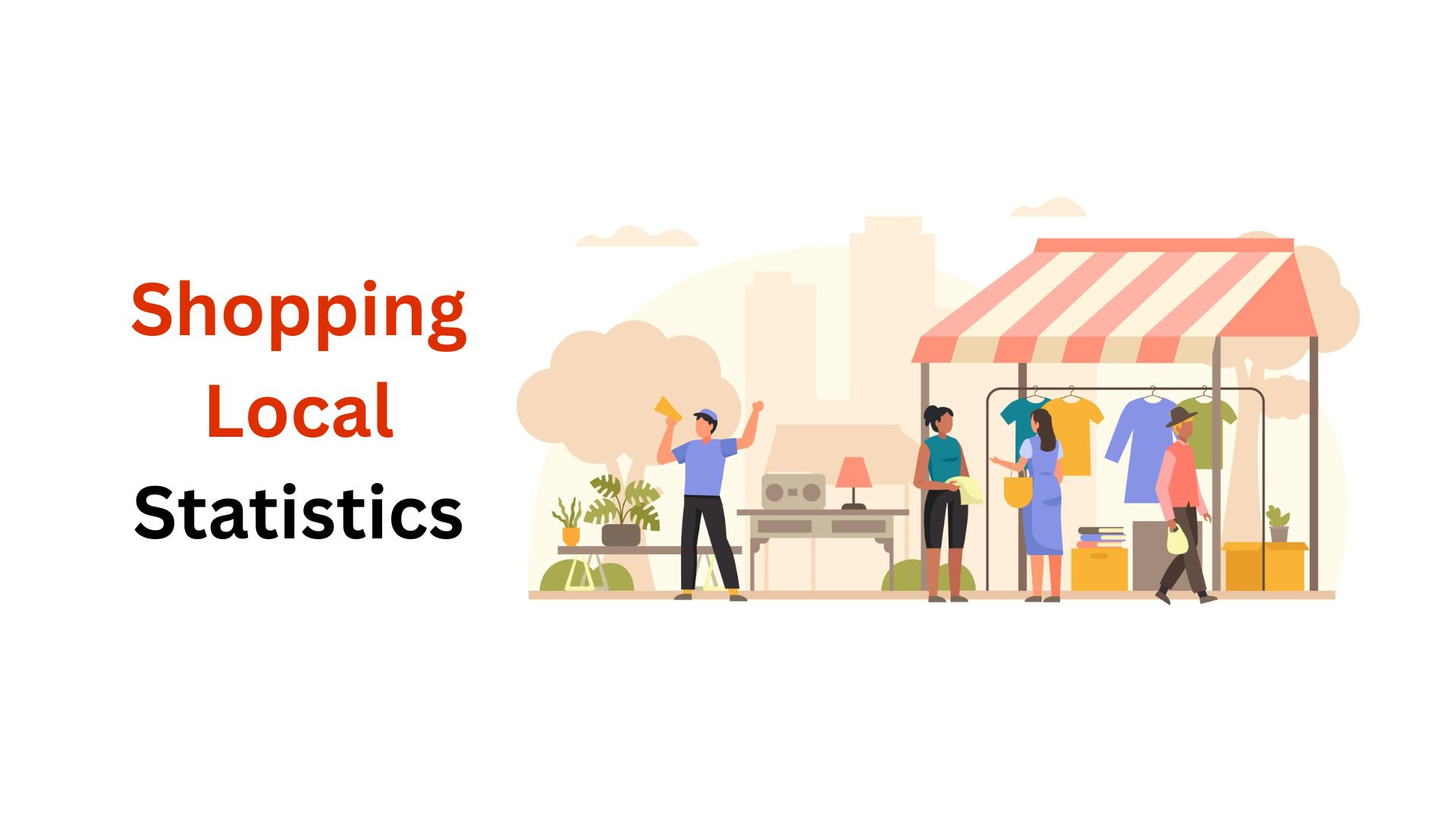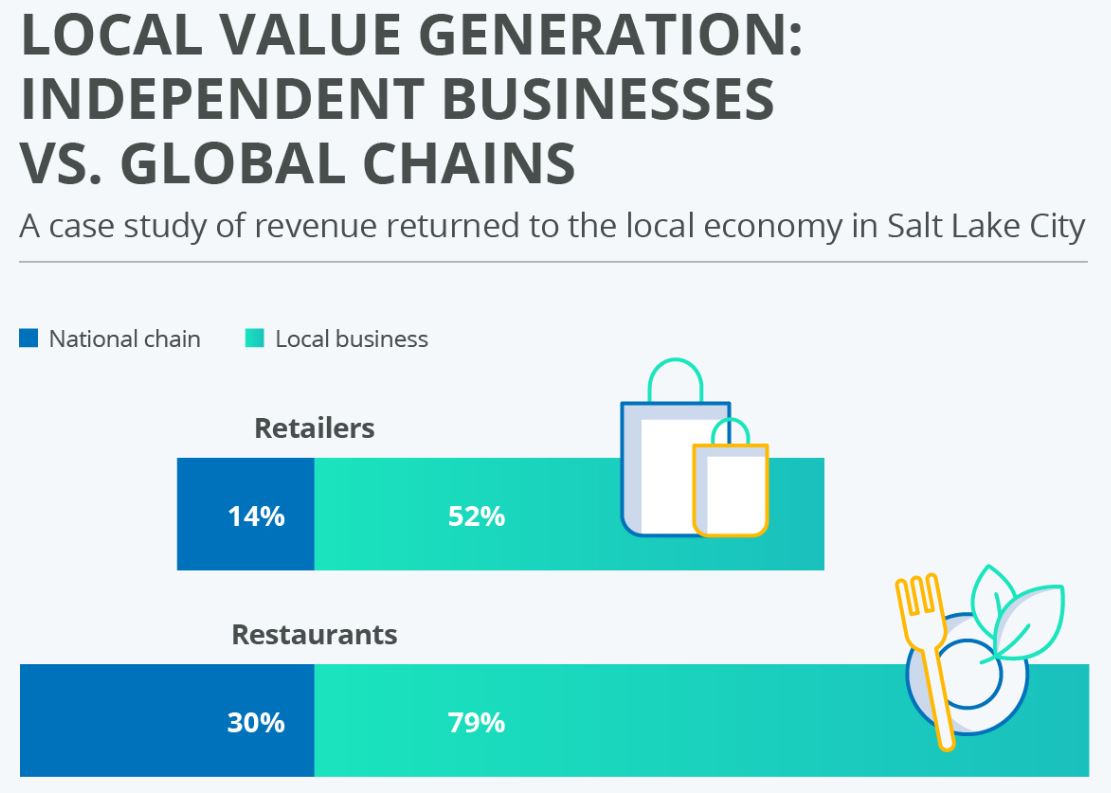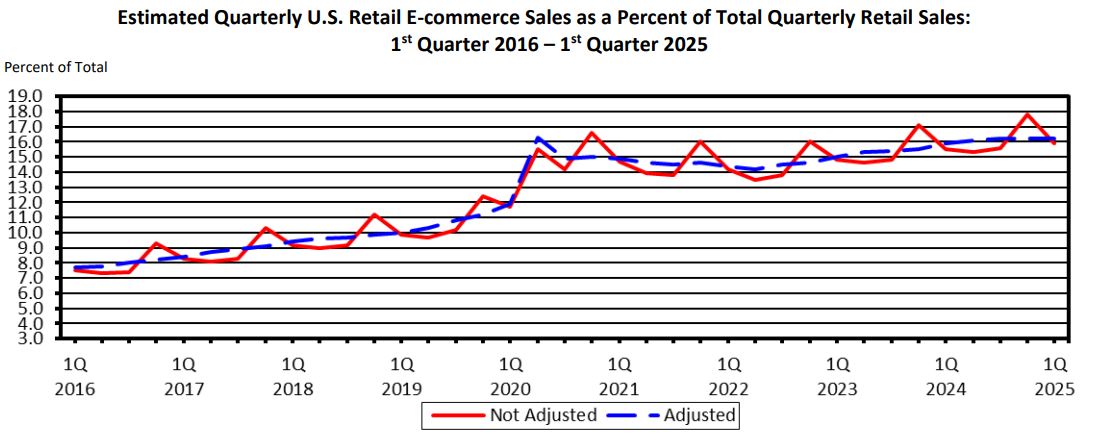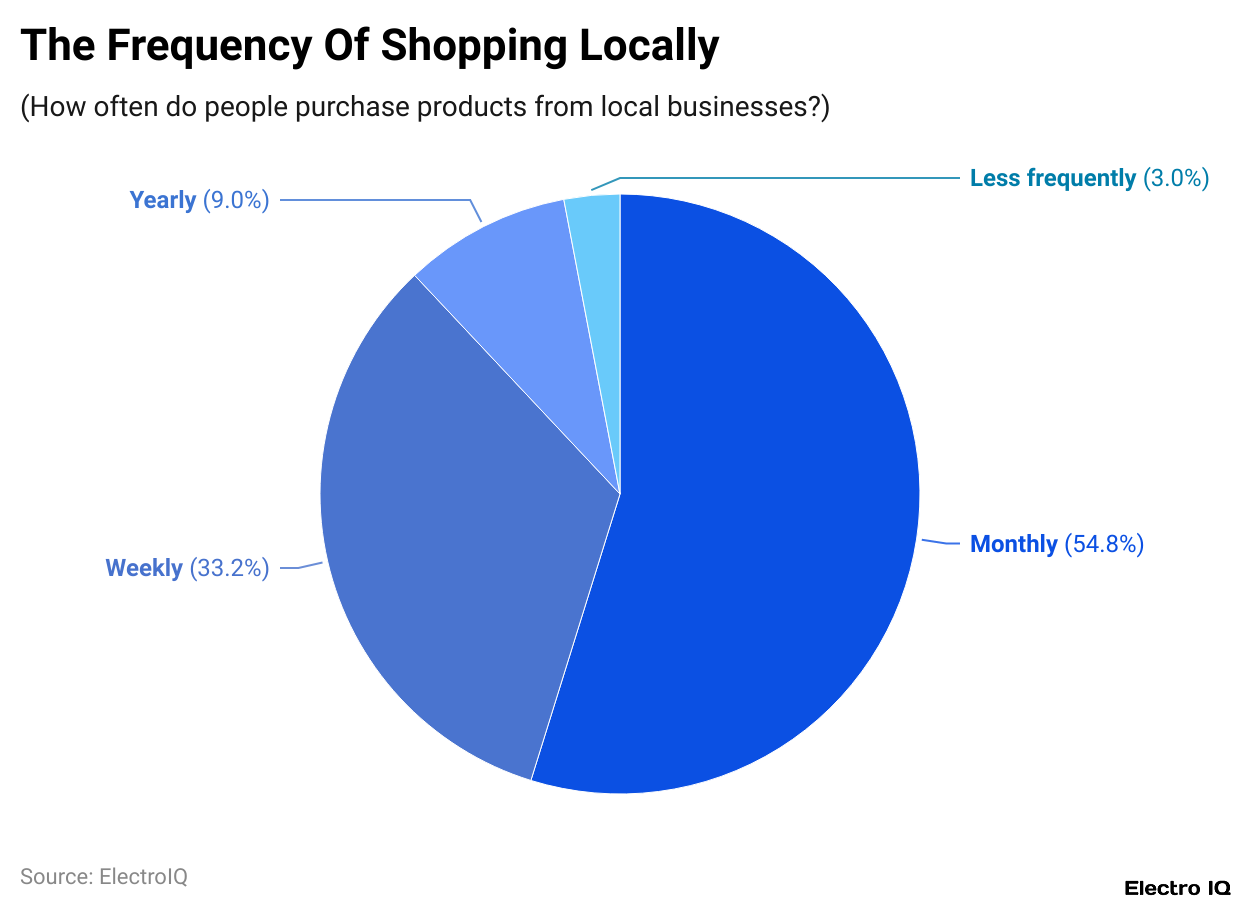Shopping Local Statistics And Facts (2025)
Updated · Sep 24, 2025

Table of Contents
Introduction
Shopping Local Statistics: In 2024, according to the trend, shopping in the local market keeps growing momentum, giving priority to community, sustainability, and customised services. From farmers’ markets to family-owned shops, in the U.S. and worldwide, renewed encouragement is put forth to small local businesses. Such online development has enabled these local shops to contend with large digital marketplaces.
Thus, this article deals with the latest shopping local statistics for 2025, along with consumer behaviour, and prevailing issues that small businesses must yet resolve.
Editor’s Choice
- Local retailers return approximately 52% of revenue into the local economy in comparison to 14% returned by national chains.
- Local restaurants return about 79% of revenue locally, compared to 30% for chain-owned restaurants.
- Local businesses return 289% more revenue to a community than a chain store.
- A dollar spent locally can go around 6 to 15 times within the community.
- Small businesses contribute at least 136% more to charity on a per-employee basis than big corporations.
- 75% of Americans say their first reason for shopping locally is to help the local economy.
- Independent retailers run 71% of UK convenience stores, with annual sales worth £47 billion and employment of more than 437,000.
- In the first quarter of 2025, e-commerce sales accounted for 16.2% of total U.S. retail sales, growing 6.1% year over year.
- Half of local product-related online searches lead to in-store visits within 24 hours.
- 37% of shoppers research online and buy in-store, whereas 20% go online only if the product is not available locally.
- 54.81% of consumers purchase locally at least once a month, and more than 82% would rather support local businesses than big corporations.
- During the COVID-19 pandemic, SMBs saw a 23% decline in revenue, 11% reduced budgets or shut briefly, and 49% of consumers actively supported local SMBs.
- Roughly 80% of millennials and over 70% of Generation Z say buying locally will be a priority for them post-pandemic.
Local Value Generation – Local Businesses Vs. Global Chains

(Source: statista.com)
- As per a Statista report, shopping local statistics show that Local businesses have a greater social and economic impact on their communities than national chains.
- According to an American study by Civic Economics, local retailers return to their local economy about 52% of their revenue compared with national chain retailers that contribute only 14%. This number is even more drastic in the restaurant industry: while local operators keep roughly 79% of revenues circulating inside the community, local chain restaurants keep about 30%.
- The underlying reason for this difference lies in the way small, local businesses operate. These businesses normally hire local workers, purchase services from local providers, and purchase goods locally to the extent possible. Thus, more of the money spent in a local establishment stays within the community, supporting other small businesses and maintaining local employment.
- On the other hand, many national chains tend to centralise operations and supply chains in such a manner that profits and resources are channelled to headquarters or out-of-town vendors, lessening their economic impact on the local area.
Community Benefits From Local Shopping
- Shopping at local businesses is good for the whole community. When customers buy at independent stores, a lot more of their hard-earned money stays within the community.
- Local retailers retain nearly 289% more revenue in the local economy when compared to chain stores. Such revenue then keeps getting recirculated within the community countless times-the sad average is between six and fifteen times for one single dollar being spent at a local business.
- That in itself creates employment grounds, while also supporting other small businesses in their operations, thereby creating general economic resilience.
- Besides that, local businesses are also often quite generous with their charity. In terms of charitable contributions, small businesses donate up to 136% more per employee than large corporations employing 500 or more people.
- That extra giving helps fund local schools, nonprofits, and community projects. Another slight plus for local shopping is the environmental benefit. Areas rich in small, independent businesses tend to have a lower carbon footprint.
- Somebody who lives in these areas will drive at least 25% fewer miles than they would be if he or she had lived in a neighbourhood dominated by large chain stores, with less traffic, less pollution, and fewer stresses on infrastructure. Further, consumer sentiment is very much in favour of the movement.
- Nearly 75% of Americans say that supporting their local economy is the number one reason why they purchase from local businesses. This shows a rising awareness that every local spending dollar is a dollar in support of their community’s economic strength, sustainability, and quality of life.
ACS Local Shop
- As per the ACS report, shopping local statistics show that 71 % of the 50,387 convenience stores are run by independent retailers (unaffiliated or symbol groups).
- 47 % of independent retailers offer home delivery or click‑and‑collect services.
- The average convenience store has 4,428 people living within 500 m.
- 79 % of independent convenience retailers engaged in community activity over the last year.
- The UK has 49,388 convenience stores in mainland UK, employing over 437,000 people.
- 17 % of convenience stores now use self‑service tills, up from 3 % in 2019.
- 32 % of consumers say their local shop helps reduce loneliness in the community.
- The average customer visits the local store 2.7 times per week.
- Convenience stores were generating sales of over £47 billion in 2023.
- 70% of the farm-to-store chain is operated by independent retailers.
- Activities of community interest engaged in by 80% of independent retailers last year.
- Last year saw investment in local shops reach £1 billion, an increase from £646 million, a 54.8% increase.
- 60% provided sponsorship to a local sports team or community activity.
- 63% of consumers live about a quarter of a mile from a local shop; 28% would have to travel from two to three miles away if the local shop closes down.
- Convenience stores provide local, flexible, and secure employment to nearly 445,000 people.
- 30% of consumers know the people running and working in their local store “very well or quite well”.
- 15% provided money or in-kind support for a local event; 5% joined in litter-picking or environmental campaigns.
- 43% gave to a food bank, 15% collected funds for a local or national charity.
Retail E-commerce Sales

(Source: census.gov)
- In the first quarter of 2025, U.S. retail e-commerce sales reached almost US$300.2 billion, with adjustments made for seasonal variation but not inflation. This figure showed almost no change from the previous quarter, at a marginal shift of ±0.7%.
- Meanwhile, total retail sales were estimated to be around US$1,858.5 billion, showing a modest 0.4% increase from the fourth quarter of 2024 and against the same quarter of the previous year, e-commerce sales had gone up by 6.1% against 4.5% increases experienced by all retail sales. This, in turn, means that, in the first quarter of 2025, e-commerce represented a share of 16.2% of all retail sales.
- In nonseasonally adjusted terms, the picture looks somewhat different. Retail e-commerce sales were valued at US$275.8 billion in Q1 2025, marking a 20.3% decline from Q4 2024, a dip that is usually observed following seasonal highs of holiday shopping in the fourth quarter.
- Nevertheless, unadjusted e-commerce sales, for comparison, went up by 5.6% over Q1 of the previous year, and total retail sales by 3.2% over the same period.
- From this unadjusted perspective, e-commerce would have accounted for 15.9% of total retail sales in the first quarter of 2025.
Local Multichannel Shopping Statistics
- Consumers today are combining online channels and brick-and-mortar shopping options that strongly impact local retail space.
- Half of online searches for local goods lead to a physical store visit within the following 24 hours, revealing that discovery through digital may be just the first step in the in-person shopping journey.
- Another 37% of the consumers like to conduct research online before purchasing from local stores, hinting at a mix of convenience with searching for ready buys.
- However, 19% of the shoppers prefer to order their goods online while picking up their items at a nearby store, indicating a trickling preference for speed among locals.
- Yet another 18% of buyers prefer to check out the goods from local stores and place the purchase online to possibly snag better deals or better selections. Concerning returns, the process explodes into importance during the functional buy decision.
- 60% of consumers engage in online purchases when local stores are available as return points, adding to the reassurance and gratifying convenience of the process.
- While there are a very lucky 37% who don’t mind spending more time or money to buy local, as they value their community or personal service more than the price.
Frequency of Shopping Locally

(Reference: serpwatch.io)
- Less than half (about 54.81% of consumers) make it a point to buy from local businesses at least once a month.
- Local businesses do a good job of attracting regular foot traffic since they are located nearby.
- Few refuse to shop locally; in fact, only about 3% of respondents said they shop locally less than once a year. People have reasons for doing so other than convenience.
- A large majority of consumers, about 8 in 10, will pay a little extra if they know that extra price goes into the pockets of a local business.
- On the other hand, 82.76% of respondents prefer donating their money to a small business rather than to a big corporation; hence, large corporations come out at a disadvantage here.
COVID And Local Business
- The COVID-19 pandemic caught many local businesses off guard in the United States and affected them in one way or another.
- Small and medium business owners felt the pinch, as 23% reported losses in revenue during the crisis. Thus, 11% of them cut down their expenditure, while another 11% had to temporarily cease operations.
- Another 10% of owners rescinded their wages; a further 5% laid off workers.
- During the initial months of the pandemic, consumers laboured to sustain local economies.
- Nearly half of those interviewed in April 2020 reported consciously choosing to do business with local small and medium enterprise companies- 49%.
- 36% of consumers donated funds or made purchases locally to support those who had been furloughed.
- The share of those who were hopeful about prospects dipped from a maximum of 80% in March to 72% in August of the same year, but it was still a larger group of hopeful entrepreneurs.
- The younger generation, in particular, felt a strong attachment to local businesses. Nearly 80% of millennials and over 70% of Gen Z consumers pledged to consciously support local businesses post-pandemic. Their heavy dependence on digital methodologies and local listing directories only goes to highlight the newfound importance of online presence and local SEO for small businesses trying to come to terms with the post-pandemic economy.
Conclusion
Shopping Local Statistics: Come 2024, local shopping is no longer an end-of-the-year or holiday season fad; it is an impactful movement backed by economic data, consumer behaviour, and community values. With nearly 70% of shoppers looking at local companies and billions of dollars flowing back into communities, the results speak for themselves.
While problems still linger, especially competition from the digital world and ever-rising costs, local companies are adapting and growing affected with digital support, loyalty programs, and concrete values. Supporting local is not just a win for neighbourhoods; it is going to help the bigger economy and the Earth.
FAQ.
Local merchant retain up to 52% of their revenues for the local economy, while national chains contribute 14%. It is even more accentuated with restaurants retaining 79% of revenues for local purchase against 30% for chains. They also hire locally, patronise local vendors, and stimulate other small businesses, going further in enhancing local employment, charitable contributions, and sustainability.
More than 54.81% of consumers patronise businesses in their locality at least once a month, and only 3% do so less than once annually. The main motivator is not convenience; 82.76% of respondents choose local stores over big corporations, with 80% willing to pay more just to support a local business.
Digital technologies somewhat stimulate local commerce. Half of all online search queries for local products end up with customers actually walking into brick-and-mortar stores in less than 24 hours. Some customers, that is, a full 37%, do research about products on the internet but prefer to purchase them at establishments in their area; 19%, meanwhile, use the internet to buy products and then pick them up at a local store.
About 23% of small businesses suffered some loss of revenue due to COVID-19, and some 11% had to close temporarily. However, on the other hand, 49% of consumers tried to purposely support local businesses, and about 36% knowingly donated or purchased goods to that effect.
In the United Kingdom, nearly 71% of over 50,000 convenience stores are independent outlets, generating £47 billion in sales and employing over 437,000 people. The stores are embedded in their neighbourhoods—79% participate in local activities, and 32% of consumers say these shops alleviate loneliness.

Tajammul Pangarkar is the co-founder of a PR firm and the Chief Technology Officer at Prudour Research Firm. With a Bachelor of Engineering in Information Technology from Shivaji University, Tajammul brings over ten years of expertise in digital marketing to his roles. He excels at gathering and analyzing data, producing detailed statistics on various trending topics that help shape industry perspectives. Tajammul's deep-seated experience in mobile technology and industry research often shines through in his insightful analyses. He is keen on decoding tech trends, examining mobile applications, and enhancing general tech awareness. His writings frequently appear in numerous industry-specific magazines and forums, where he shares his knowledge and insights. When he's not immersed in technology, Tajammul enjoys playing table tennis. This hobby provides him with a refreshing break and allows him to engage in something he loves outside of his professional life. Whether he's analyzing data or serving a fast ball, Tajammul demonstrates dedication and passion in every endeavor.










